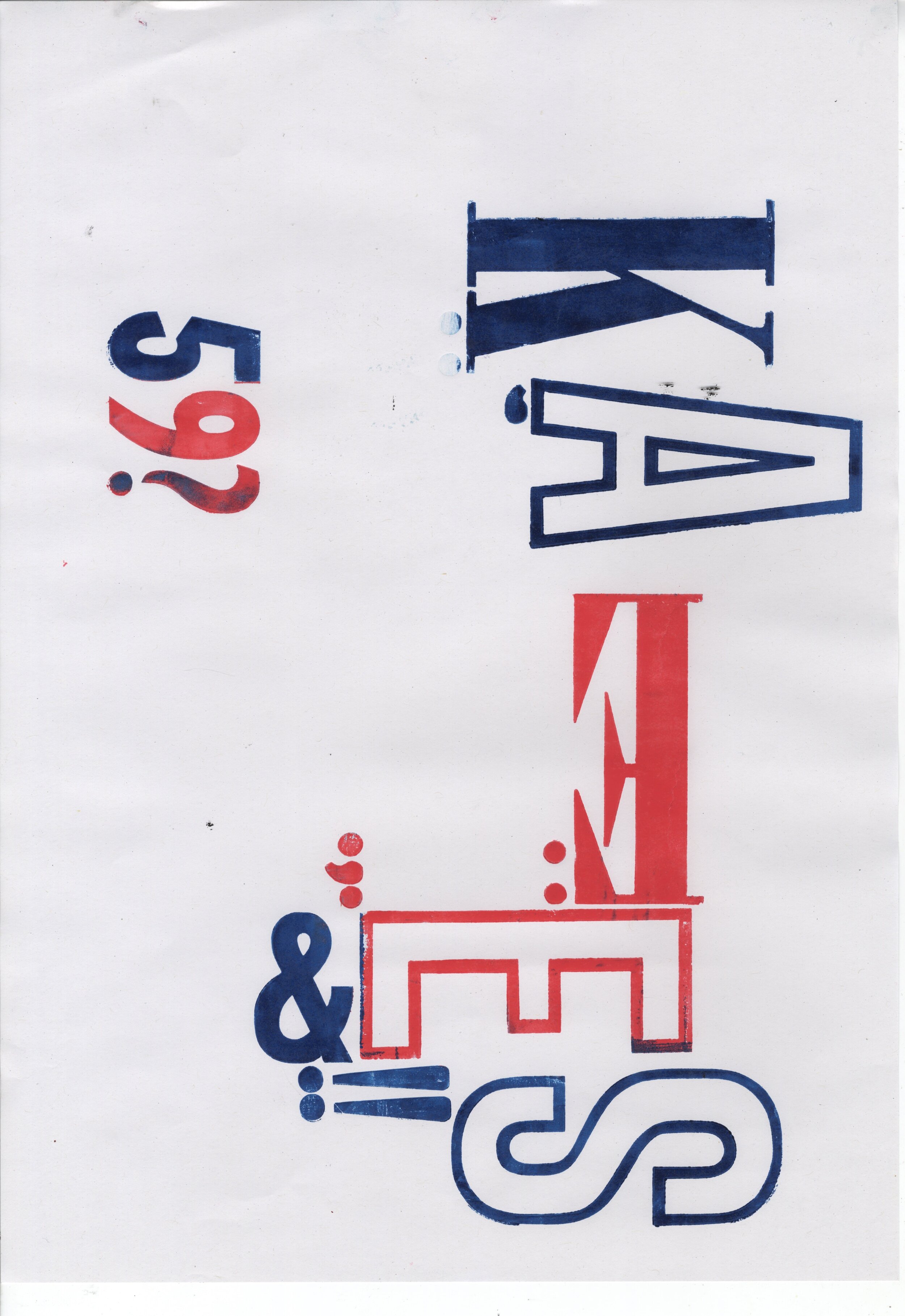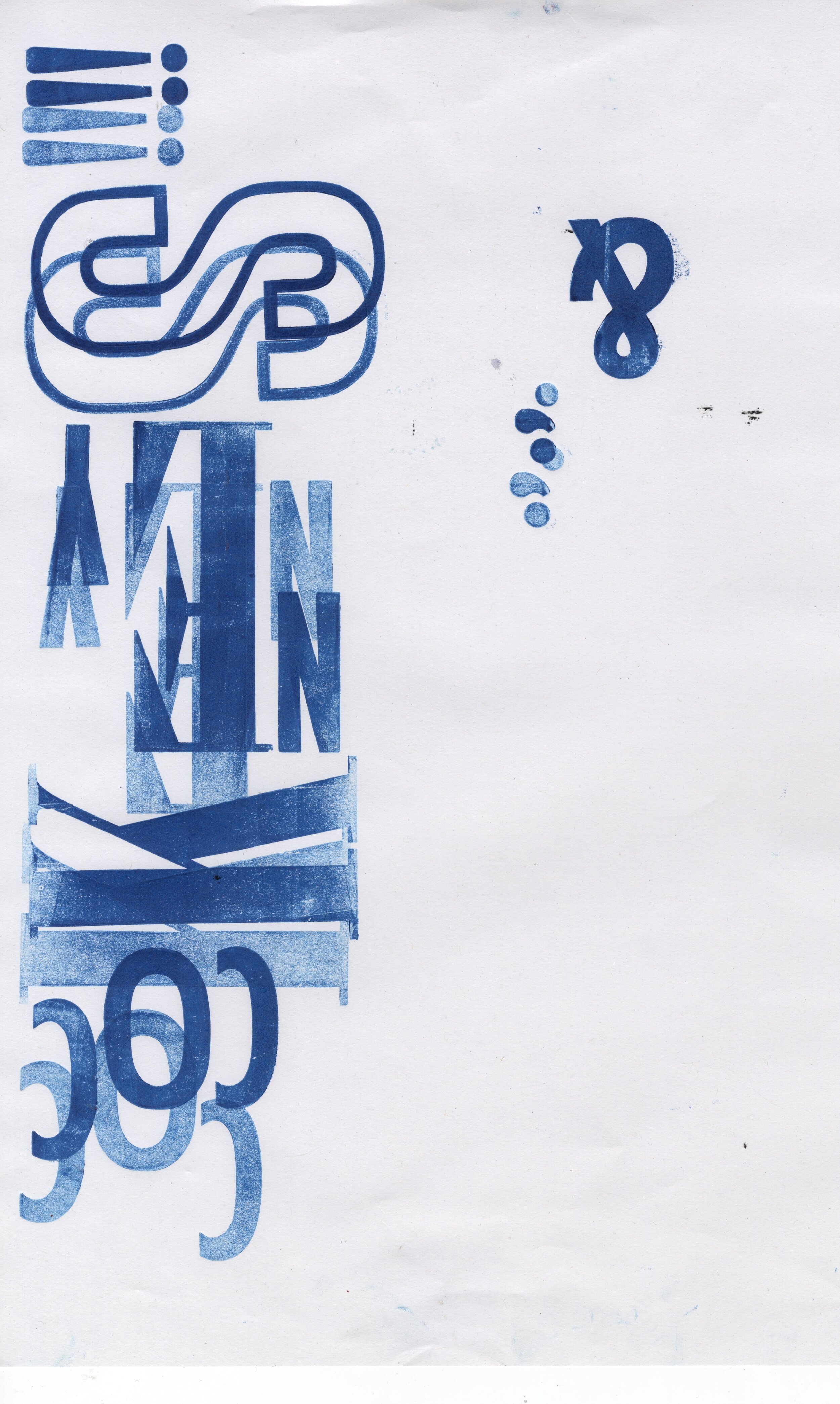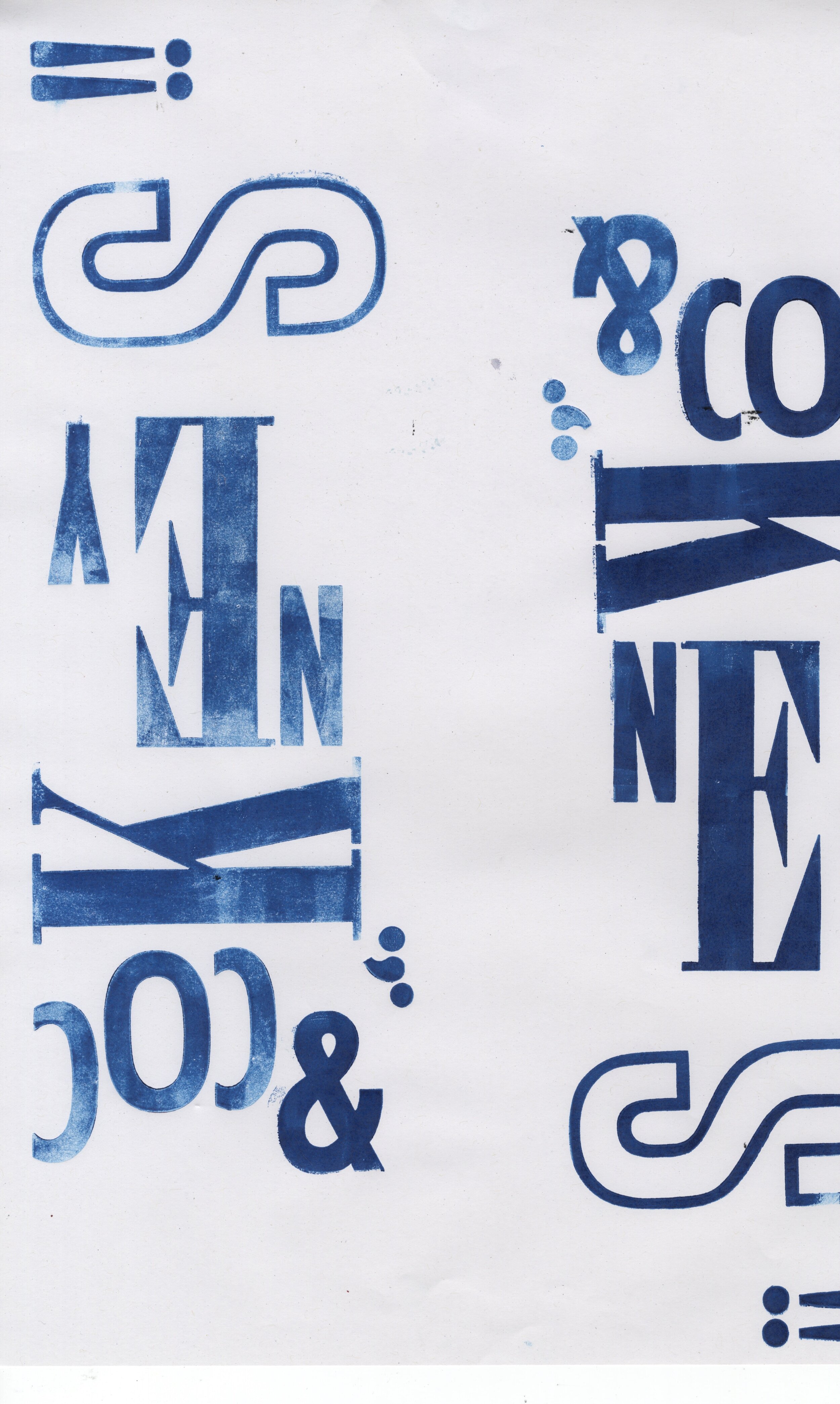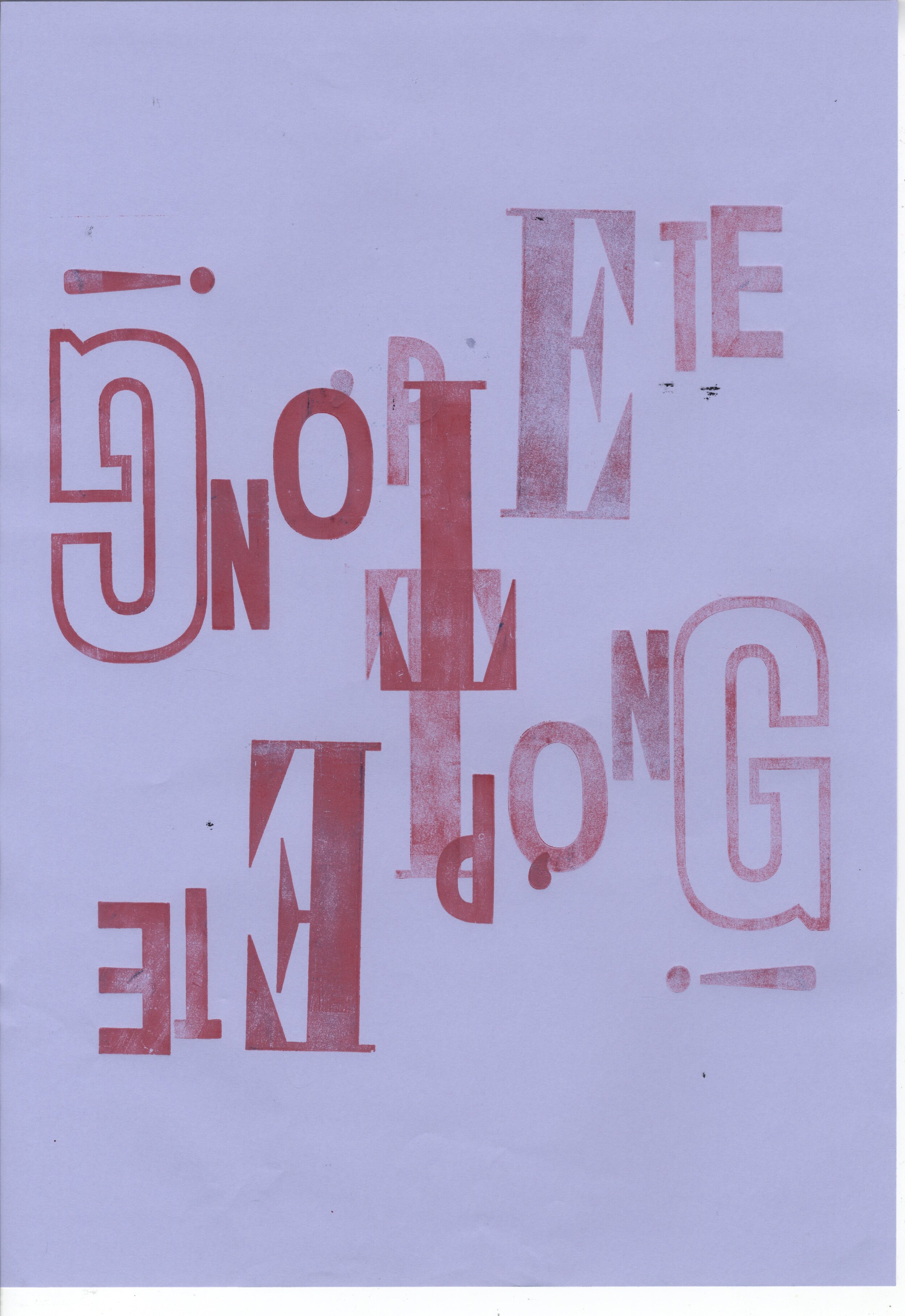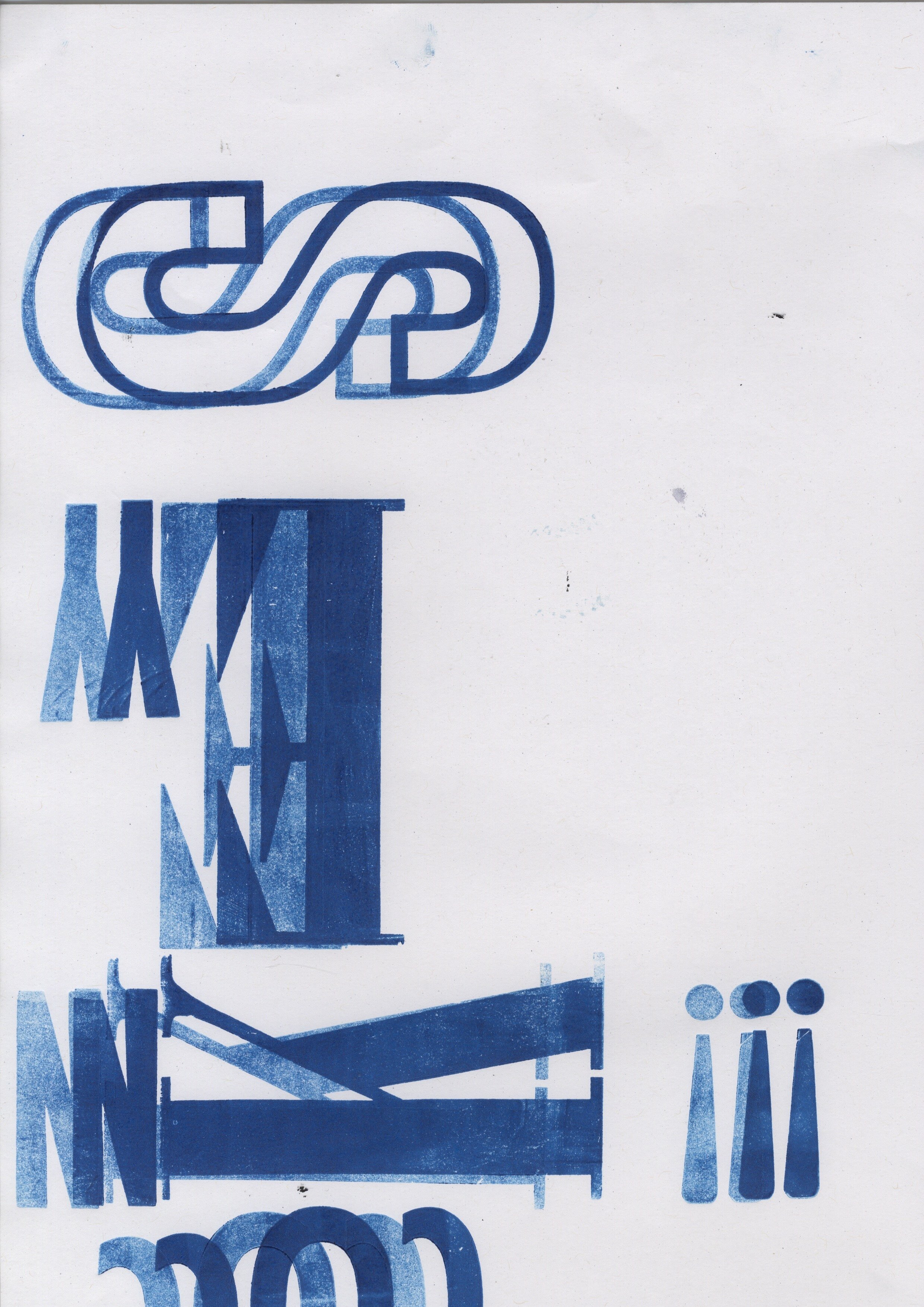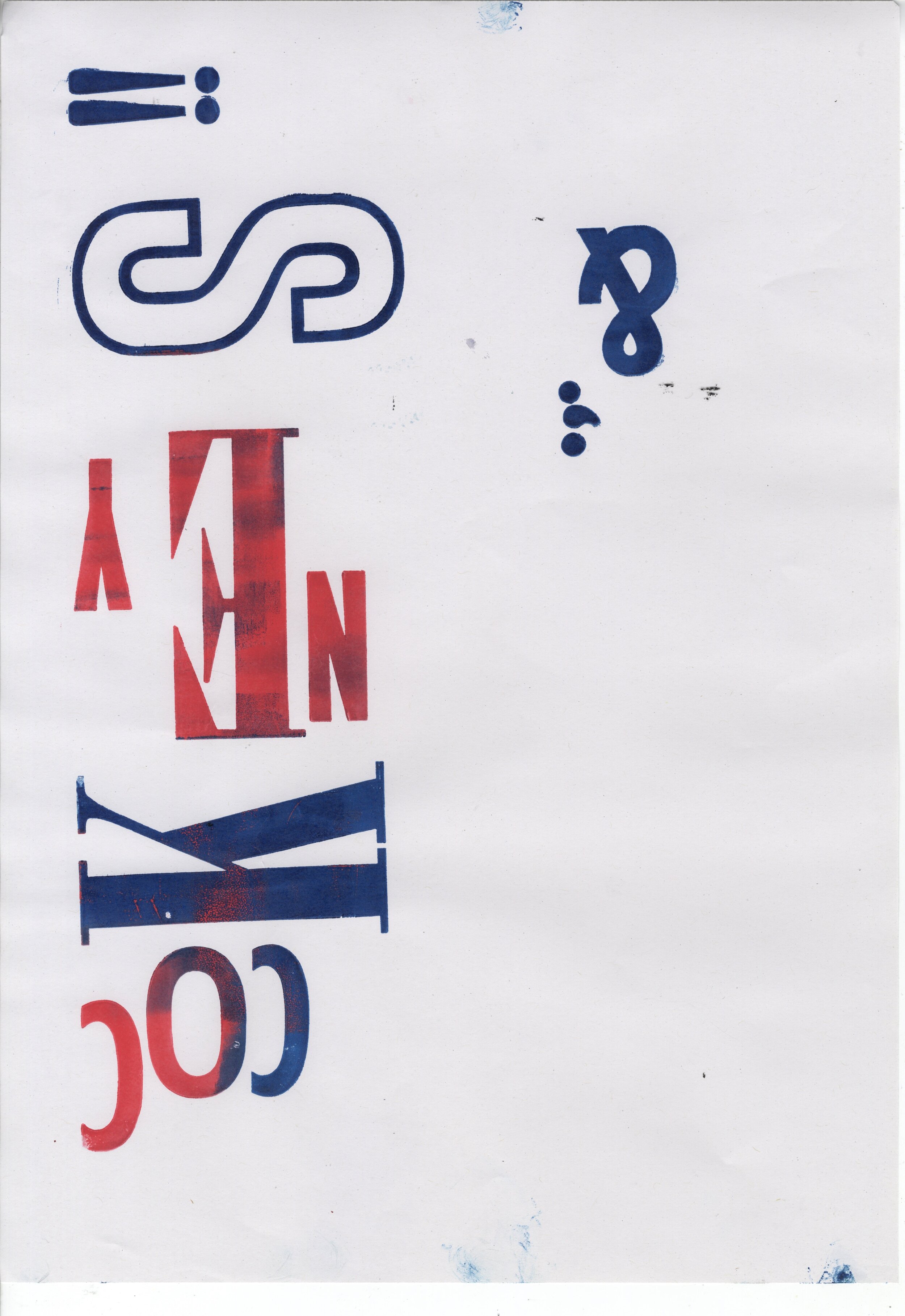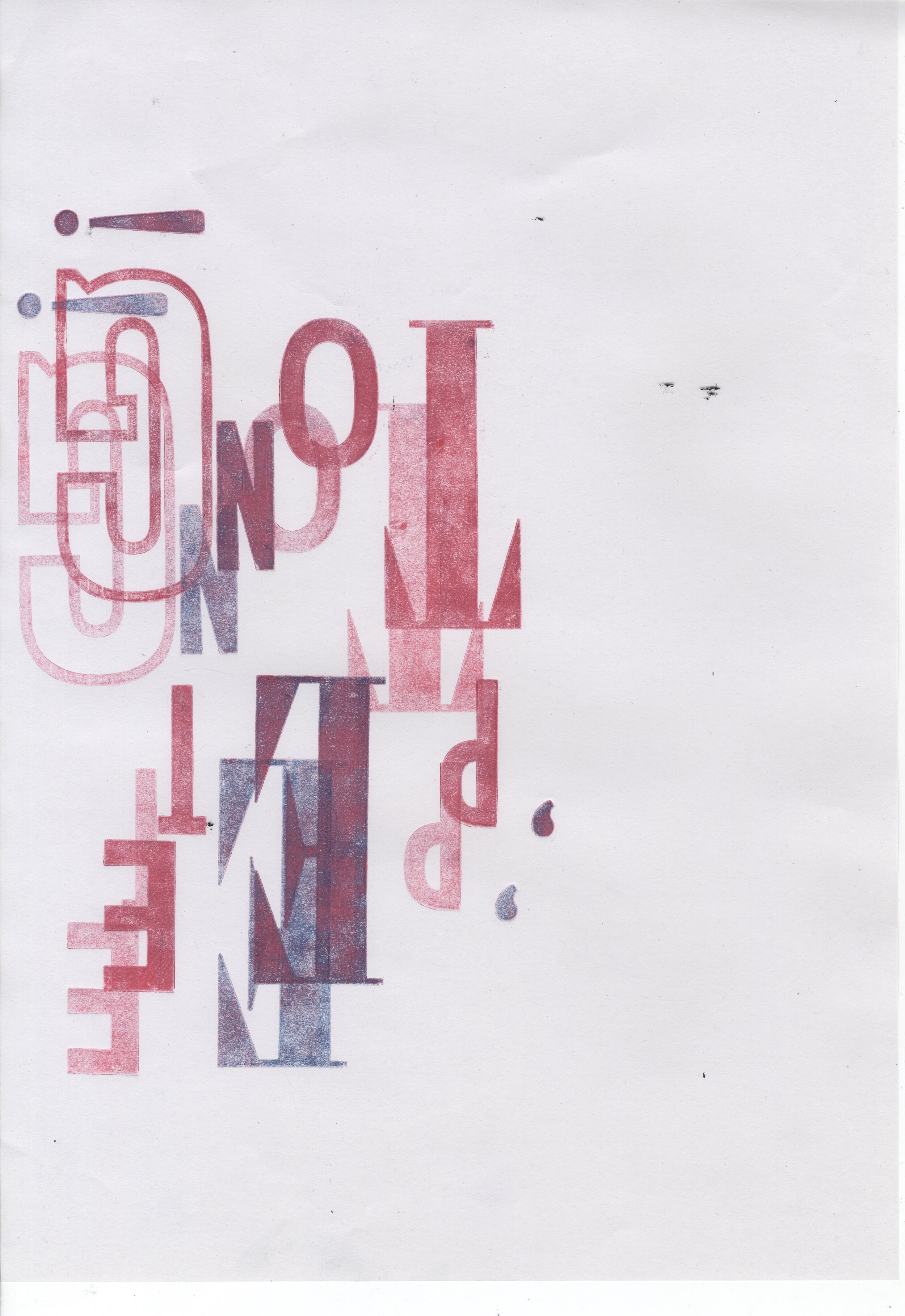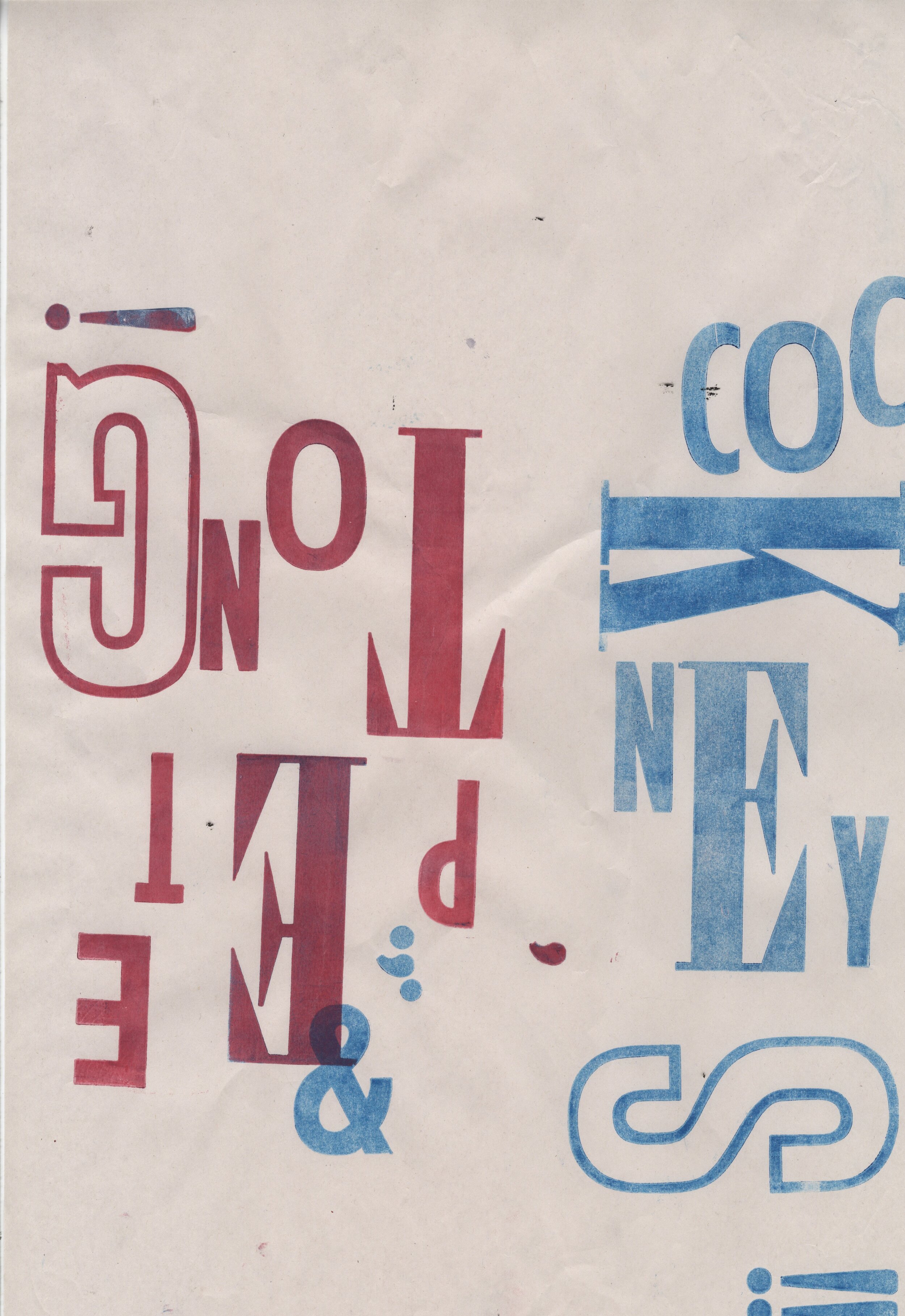All Things Cockney.
My FMP while at Arts University Bournemouth.
-
Curator and Designer
-
My Final Major Project was inspired by my Dad's cockney roots. It consists of a series of limited edition screen and lino prints as well as a book project showcasing the print methodology and research. The dialect has a rich, niche history. The origins became paramount to how each print was created. The nature of the term and its context would decide the materials, style and typefaces chosen. A small book in a Q&A format was also created on a cockney’s upbringing in East London. Both books use a playful typographic layout to relate to the dialect and its comical element.
This project was ongoing during COVID 19 which meant I had to adapt to my circumstances. Submission was due in June 2020 and as I was no longer able to access the university print studio, I purchased a screen printing kit and set up my own print studio at home (in the garden) to complete the project.


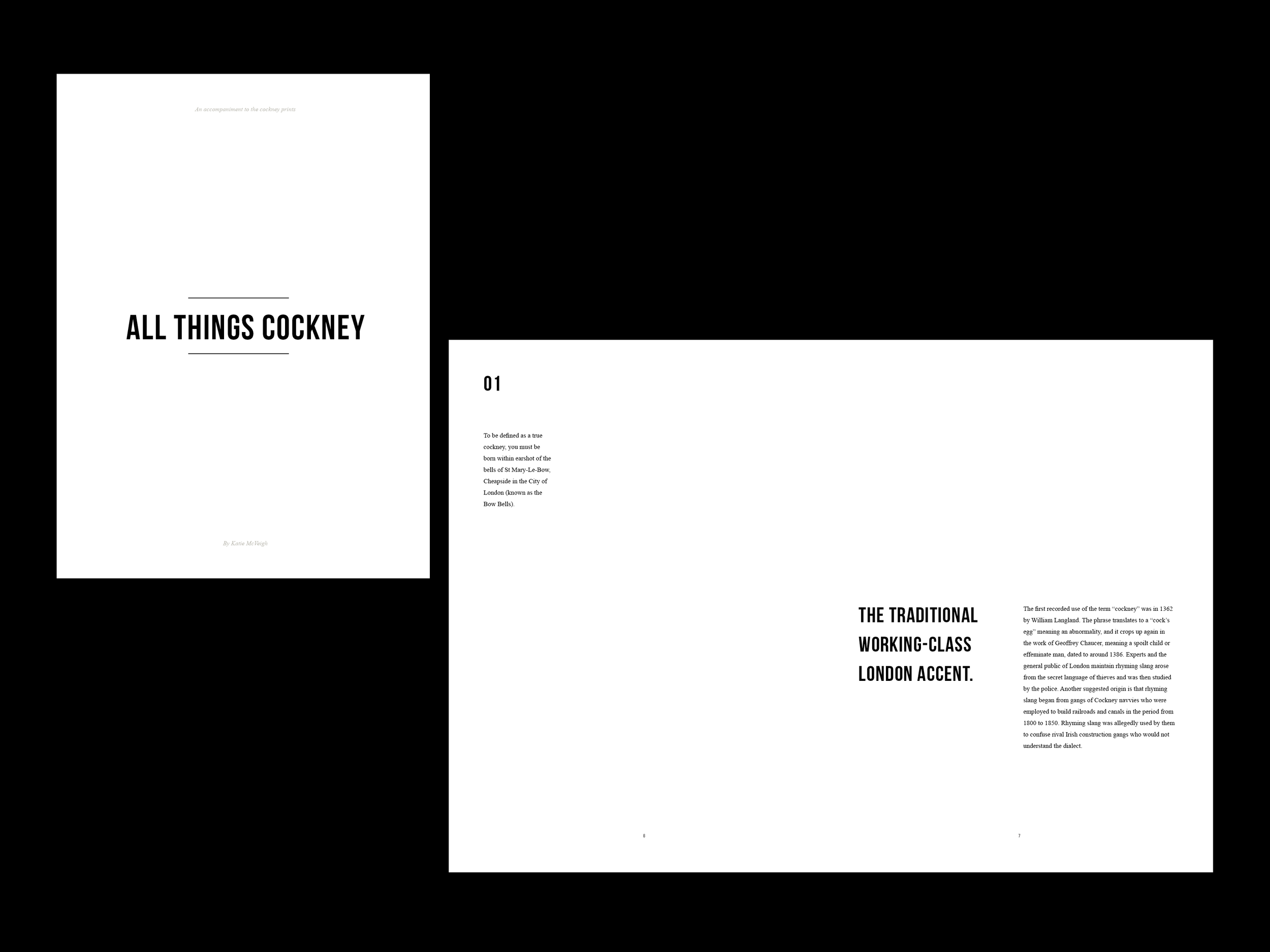


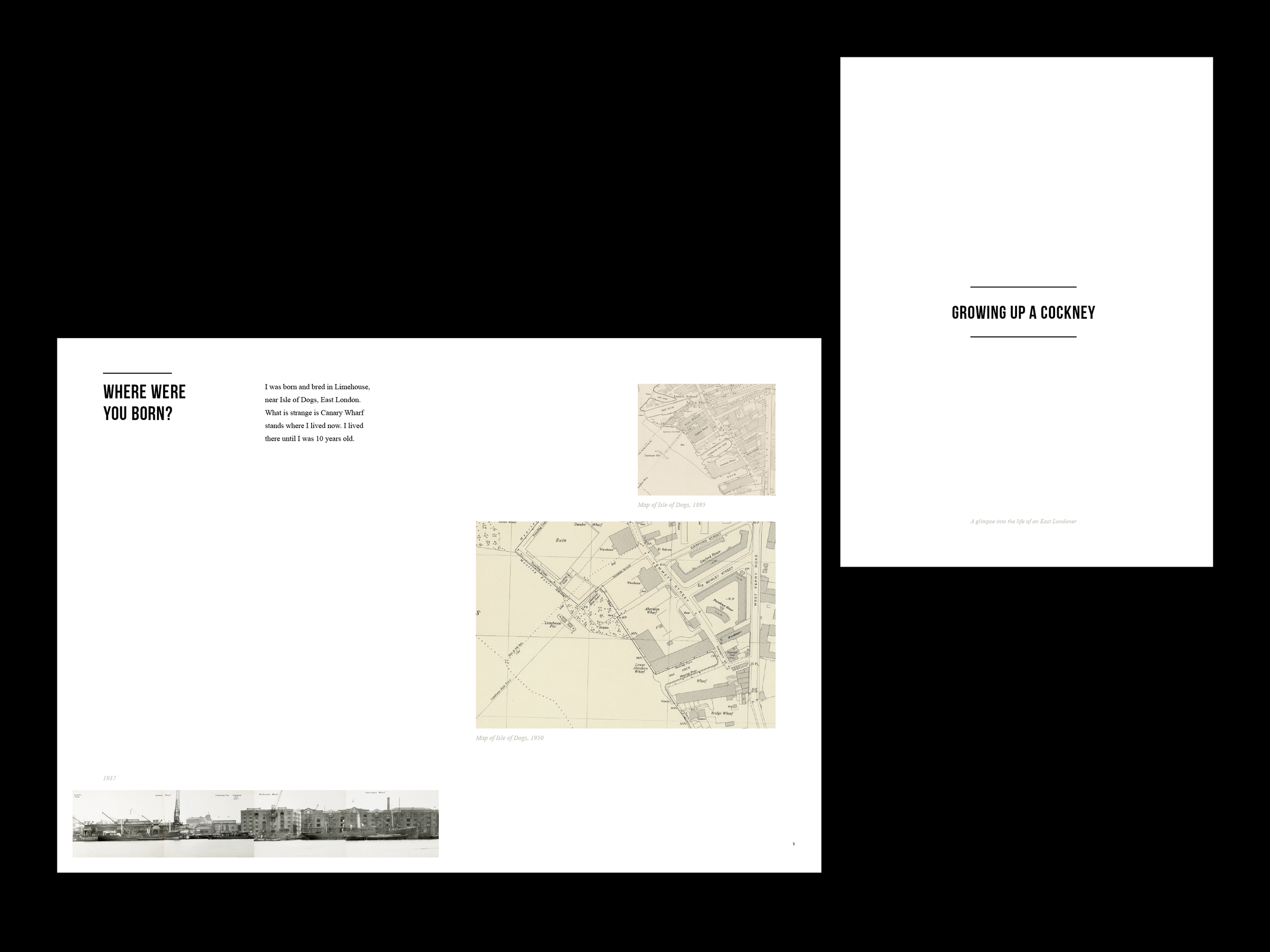
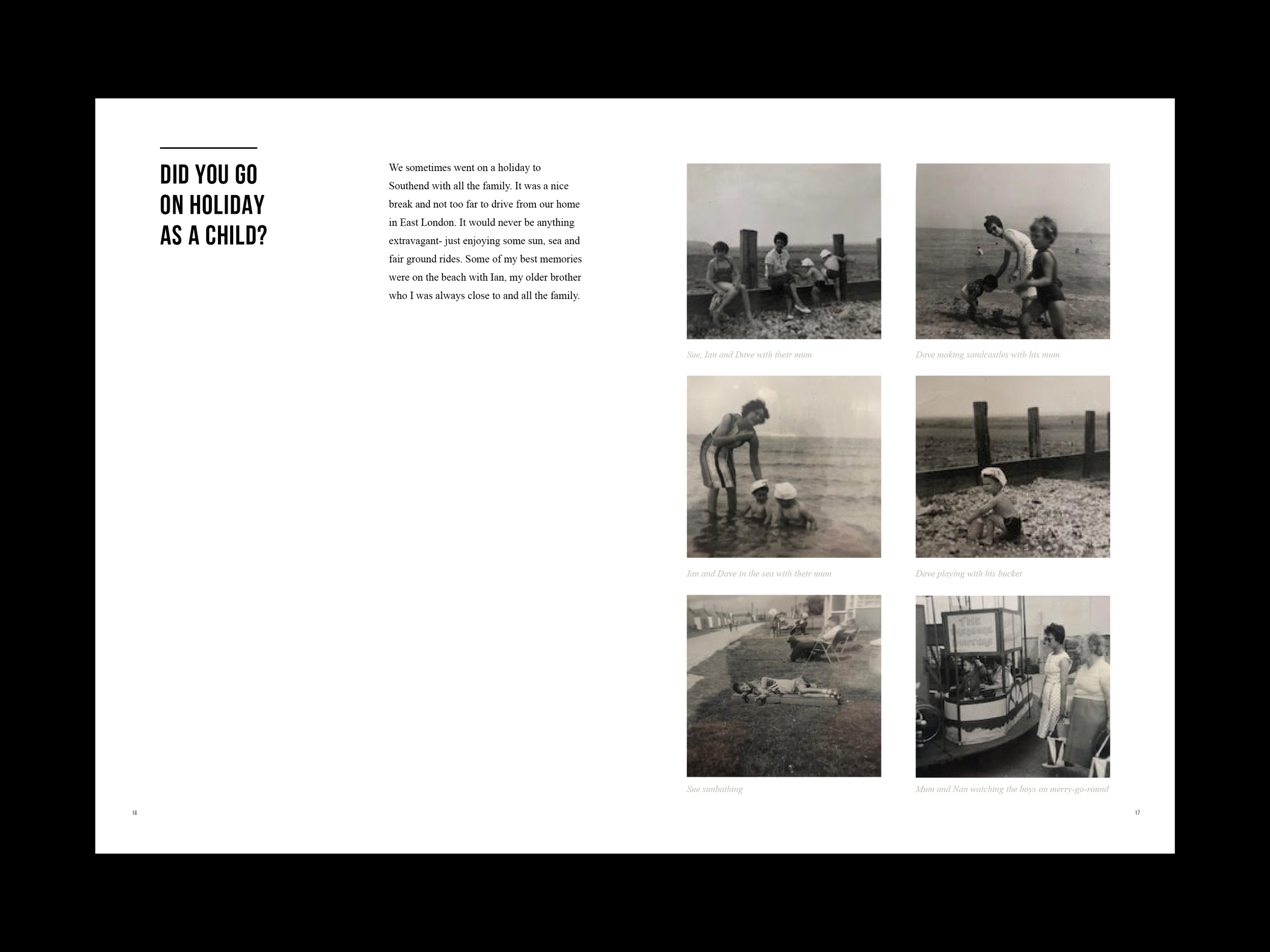

Each Cockney Print explained…
-
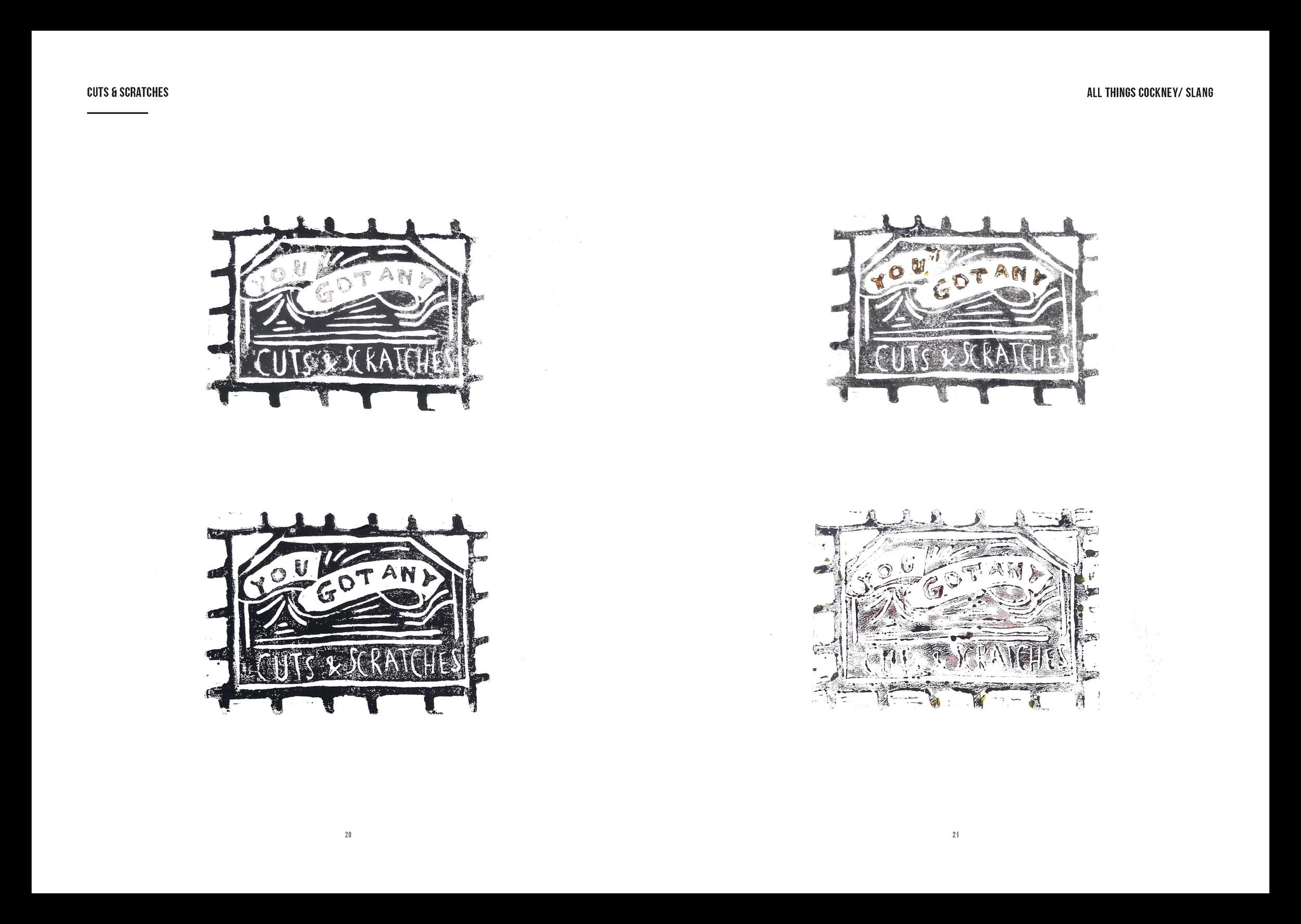
Cuts & Scratches - 1870
The term cut & scratches originated sometime in the 19th century. It is most likely to be the late 19th century due to the introduction of safety matches happening and the immediate popularity. Poor quality imported saftey matches often cut and scratched the side of the box without igniting.
Material: Linocut with black printing ink
-

Pig's Ear - 1880
What should we know about the services you provide? Better descriptions result in more sales.The term Pig's Ear first appeared in the book Life and Work among Navvies by D.W Barrett. It was published circa 1880. In the book, it states: “Now Jack, I’m goin’ to get a tiddley wink of pig’s ear”. Century typeface is used in the Pig's ear print as the date of origin for both the term and typeface is within the same decade.
Material: Screen print with a combination of beer and coloured printing ink
-

Bees & Honey - 1890
There are many terms related to the transaction of money due to the use of cockney slang on the markets to sell products and grab locals' attention. Bees and honey has long been a cockney term for money. It has been difficult to find an exact date of when this term was first used but it is said to be a classic term probably dating back to the late 19th century. The screen prints use a 19th century typeface in keeping with the slang's origin date as well as the the relief of coins - 20ps and 2ps.
Material: Screenprint with ink and coin printings
-

Rosie Lee - 1929
Tea is an iconic drink the English have always loved. It stems back to the British Empire and rule of India - known for its exceptional tea plantations. Tea has many nicknames, one being Rosie Lee, a cockney rhyming slang term. Rosie Lee has an uncertain origin however it is thought to be a famous gypsy who was first referenced in J.B. Priestley's The Good Companions. For the Rosie Lee outcomes, the actual screen was used due to its bold effective look and retain the bubble effect.
lMaterial: Screenprint with ink and tea water
-

Ruby Murray - 1950
Curry became a staple of British cuisine post world-war after the influx of Asian immigrants to England. It's popularity led to an increase in curry houses in London as well as its appearance in pub menus in a bid to get locals to stay longer in the social spaces. Ruby Murray was one of the most popular singers of the 1950's with 5 singles in the top 20 in a week of 1955. It was purely due to timing and her name rhyming that the Belfast-born singer became used to reference curry.
Material: Screenprint with curry sauce and water
-

Pete Tong - 1979
Pete Tong was first coined by Paul Oakenfold in late 1987 in an article about acid house called "Bermondsey Goes Balearic" for Terry Farley and Pete Heller's Boys Own fanzine. Peter Michael Tong is an EnglishDJ born in 1960. Tong's first DJ appearance was in the late 1970's on Radio Invicta 92.4FM however he and his electronic music would rise to real fame in the 1980's and 90's. Like most slang, it is down to timing and his name rhyming that he was used for the iconic term. The prints use rolled ink backgrounds and a varied typographic layout to visualise the notion of things going wrong/ 'Pete Tong'.
Material: Screenprint with printing ink

Map shows Limehouse, the London Borough of Tower Hamlets
Initial Letterpress Experiments
